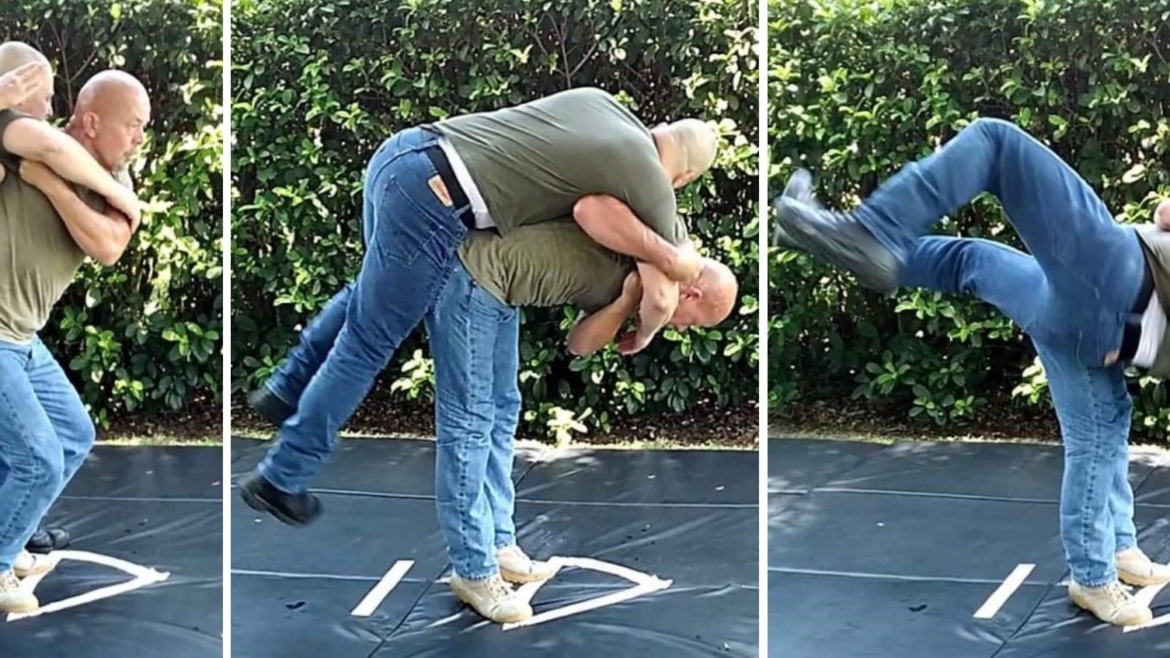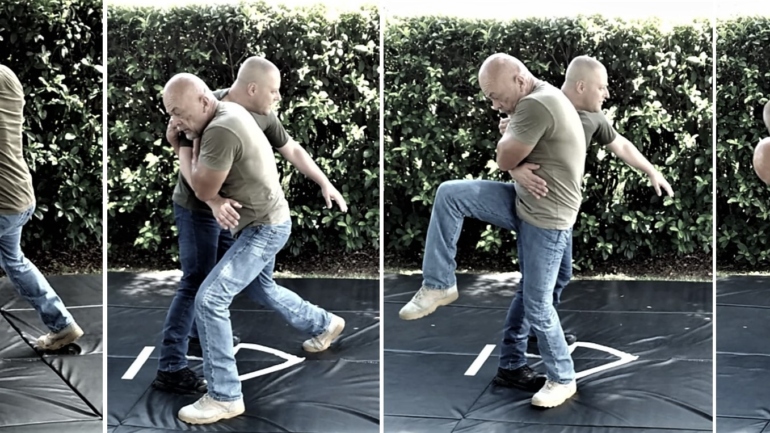What we don’t see today is the effective use of Judo outside of the dojo in an urban environment. The question then becomes how can we incorporate these skills and techniques in an uncontrolled and unexpected situation? Being able to utilize judo and its principles in a street encounter requires more attention to the technical aspects of throwing an aggressor not wearing a judo gi (uniform). In the dojo there is a heavy reliance on the gi because of the material from which it is made. You can pull, jerk hard, even pick up the opponent by gripping the lapels or sleeves. Long hard pulls on the gi are quite common in the sport and dojo. In the street however, one does not have this luxury and you must deal with everyday clothing which is less cooperative.
The US military has been doing judo sans the gi since WW 1 and there is probably no better method for the effective application of judo in an urban environment. The simplest and most direct way is to target the area at the pocket of the shoulder just above the arm pit. This tactic of off balancing can be found predominantly in the US Army 21-150 FMs from 1954 through to 1971. Unfortunately, after the publication of the 1971 manual this tactic disappears from future publications. Not only does pushing against the pocket of the shoulder rock the aggressor back on his heels but it also is capable of turning his upper torso and disrupting his posture or good athletic stance. Judo Champions, past and present, have utilized the arm pit grip successfully in both their offensive and defensive arsenal.
The method of striking this area of the shoulder and then gripping proved to be very effective in combat. First, and foremost, you have a lot of control with the armpit grip. Pushing or pulling with the armpit grip also requires a much smaller motion and less effort. Gripping at the wrist, arm or sleeve requires a longer pull to off balance the opponent. This in turn gives the opponent the time to react. Grabbing someone’s wrist or arm may also telegraph your intentions and he can instinctively pull his arm back making it more difficult to off balance him.
Very similar to its uses in the sport the armpit grip provides incredible defense and distance control in practical self-defense application. It is very useful in blocking the aggressor’s attacks and restricting his movements and also keeping him off balance affecting his ability to execute any type of successful attack and his ability to counter.
In order to throw an aggressor, it is necessary to upset or disrupt his balance while you maintain proper balance. Unbalancing may be done from a standing stationary position or while moving. A throw does not work unless you first off balance and or disrupt the opponent’s posture. It is always easier to throw an opponent in the direction that you have him unbalanced to.
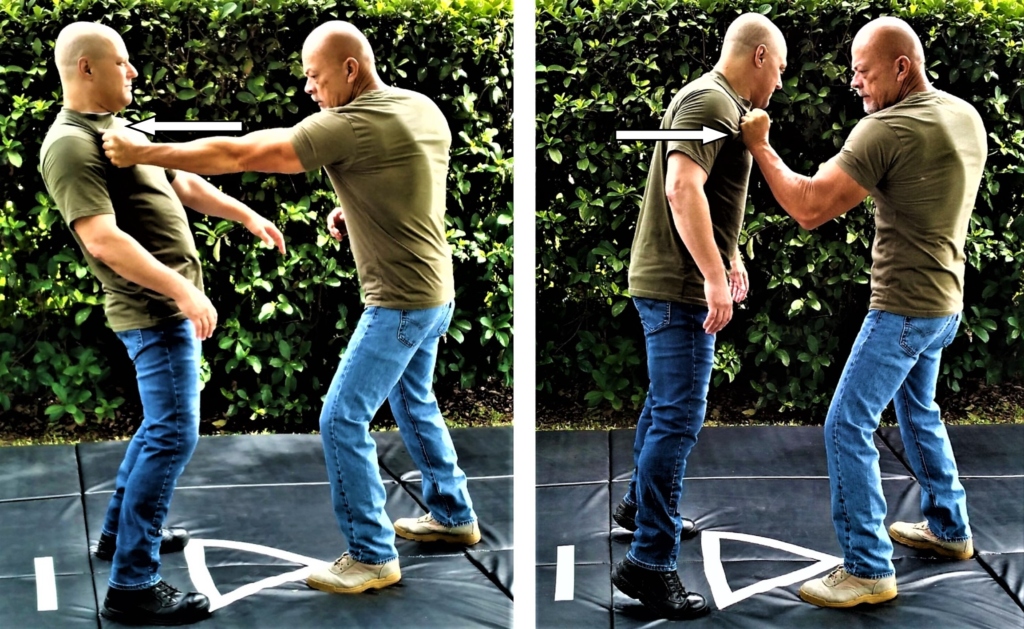
- Grip at the pocket of the shoulder at the area above or at the armpit. Push the aggressor to the rear and as he is forced back on his heels he loses his balance.
- As he rocks back on his heels and tries to regain his balance pull him to the front (toward you). This will rock him forward up off his heels and on to his toes. Even rocking him back and forth slightly causes a whiplash effect and is enough to prime him for a throw or take down.
The Shoulder Stop
Targeting the pocket of the shoulder and striking it will unbalance the opponent and effectively disrupt his posture. These entries are primal gross motor movements and ballistic in nature. It can be utilized very effectively at short medium and long ranges. It can also be used when the attack is anticipated and done to intercept an incoming strike. The entry can be executed with either foot stepping forward while striking either one of the shoulders or both of the shoulders simultaneously. This disrupts the opponent’s posture and balance.
This momentarily takes the aggressor completely out of the fight, stopping him in his tracks and immediately giving the defender the advantage. Similarly, today’s elite level Judo players will “punch” in their grips like a boxer throws his punches. They then pull on the opponent’s gi to set up their throws. This particular skill translates very well to a practical self-defense situation.
Step directly into the aggressor and strike the pocket of the opponent’s shoulder in the area just above the armpit with the heel of your palm and then grab his clothing at the area struck.
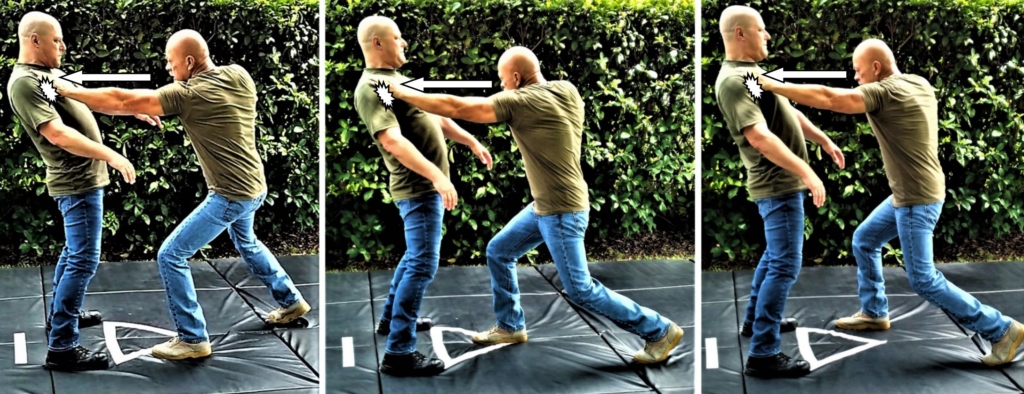
- From a non-violent posture step forward with your left foot and simultaneously strike his right shoulder with your left hand much like you would deliver a lead jab in boxing.
- From a non-violent posture step forward with your right foot and strike his right shoulder with your left hand much like delivering a cross in boxing.
- From a non-violent posture step forward diagonally offline with your right foot while delivering a strike to the opponent’s right shoulder with your left hand.
In setting up your throw you want to create a whiplash effect. This is most effectively accomplished by striking the shoulder rocking him back on his heels and then suddenly jerking him forward to bring him up on the balls of his feet. When rocked back on his heels, as in the picture below, the aggressor will automatically and instinctively try to correct his posture. He may either take a step backward or try and lean forward to retain his balance. A sudden quick jerk toward you will cause him to rock forward onto his toes.
When stepping in you want to make sure your knees are bent and your center of gravity is low. Your belt line should be lower than his belt line. Your foot placement is imperative. A step too shallow requires more effort/strength to execute the throw. You don’t want to muscle your throw. You want to rely on leverage not muscle or strength. The deeper your step the easier it is to lift and throw the opponent. In the example below, the opponent or aggressor is standing square with the defender. The toes of both of his feet are in line with each other forming the base of the triangle.
BASIC – STEP AND PIVOT ENTRY
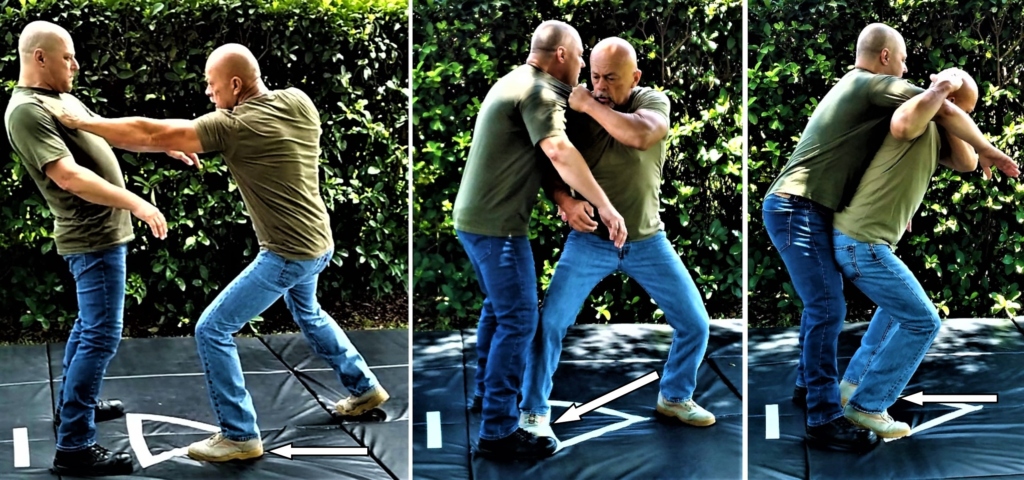
1.) Step forward with your left foot bending at the knees to get your center of gravity low.
2.) Step your right foot to his right foot at the left corner of the triangle and pivot on the left foot. Your right big toe should be almost touching the side of his right big toe. Your right foot should be running along the length of the baseline of the triangle.
3.) Pivot counter clockwise on the right foot and bring the left foot back to the base line of the triangle to the inside of your opponent’s left foot (steps #1,2 and 3 also pictured below at different angle).

